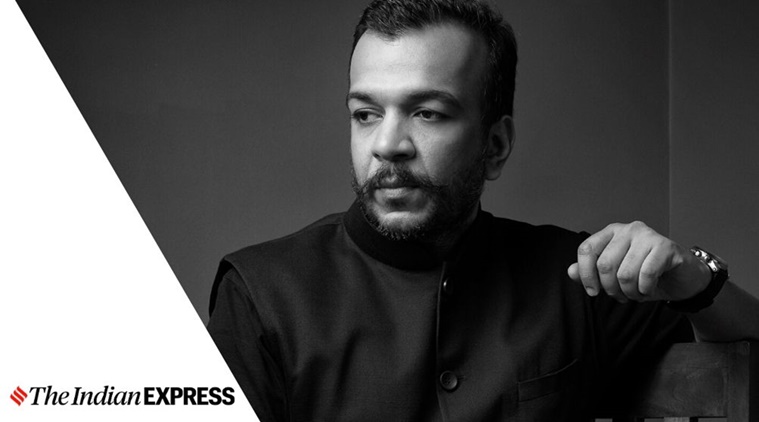 “I really feel sustainability stems from progress”, says the ace designer. (Photo: PR handout)
“I really feel sustainability stems from progress”, says the ace designer. (Photo: PR handout)
Amit Aggarwal needs no introduction. The well-known designer is someone who believes in change and sees sustainability as more than just a trend. In a candid conversation with the designer who has worked with many B-Town celebs like Kareena Kapoor Khan, Deepika Padukone and Kriti Sanon to name a few, talks about why constant discovery is the backbone of his label, how the fashion industry needs to evolve and the changes he plans in future.
Excerpts from the interview:
When did you start with fashion design? Tell us a memorable moment that has defined your sensibility.
I cannot possibly imagine an alternate career option! Since the age of eight, I knew this is what I wanted to do. There’s not one striking moment that could possibly change the course of your life. Rather, I feel that once you set yourself on the path, it is a chance to discover yourself every single day. It has been an upward growth throughout.
In your Instagram post, you mentioned how you replaced age-old hand art with recycled polymer and industrial metallic yarn. Was moving towards sustainability always a part of your masterplan?
This was never a part of my larger plan. I always felt that sustainability needs to be spoken of at a much larger and deeper level rather than just as a trendy term. Sustainability stems from progress. If one wants to build a better future, one has to reflect upon their past and make it relevant for the future. Having said that, a lot of crafts that we do, including textiles and embroidery, are traditionally rooted in the history of the country, like Zardozi.
However, I also like to focus on employing new-age material so that the visual language changes and it allows us to add a special perspective to our creations.
How do you procure your materials?
Managing the material was a huge challenge since the inception of the brand as our ideas were new. But once the process started, it was easy to collaborate with the factories for our material. Many of our materials are actually by-products; for instance, when sequins are cut for the thread to pass through, there is a massive amount of waste created in the supply chain. We find a way to incorporate it into our creations.
There was very little conversation taking place about new-age textiles. We have, in fact, been practising this technique since 2007 when we launched Mohor.
You lay heavy focus on how the Indian craftsmanship and the industry needs to evolve. What are these aspects? Have you managed to incorporate these changes?
The industry needs to evolve to cater to the modern idea of fashion. Not undermining anyone, but the whole idea of craftsmanship is important and we as a country have unbelievable crafts that can be made relevant to modern times. Fashion needs to finally show you a product that can be worn anywhere anytime.
I think that is one of the ideas our label caters to. Our clothing isn’t something you can only wear once and not think of keeping for future generations. It is supremely contemporary and will continue to be so. For me, if you aren’t evolving you end up giving the same thing back without letting it grow.
The other important aspects of craftsmanship are how one engages a modern craftsman. These are usually second or third generation and while they aim to continue with their craftsmanship, there are many who want to try new elements. As a result, in my factory, I have trained a lot of craftsmen to utilise their basic crafts and at the same time be excited about new material. After all, it is also exciting to create something that is different.
Weaving is a basic technique; we create the textile that is woven by hand but instead of the yarn, we use polymer strips. This is partly industrial waste and partly textile, yet has all the elements of textile but is also hand-woven. This allows us to utilise the traditional craft but at the same time move out of our comfort zone.
What are the first few changes you would want to incorporate once the situation eases?
At an organisational level, I would want to streamline the services of the label. The last few months have given us time to reflect upon what areas can be made better, how processes can be smoother and mistakes learnt from the past. Most of all, finally understanding the kind of product the customer wants from the label and at the same time reinvent so they have something new to experience and witness.
We need to focus on our strengths and core products. There is a lot of sourcing of materials from China, not just for us but for everyone. However, we have made a conscious decision to be self-reliant and not depend on external sources.
How do you think the Indian bride has evolved in the last decade? Has she been able to carefully amalgamate modern notions with tradition?
I think it’s just not the bridal market, but every aspect of fashion has seen a focus on self-awareness. I have also seen that generally, people have been welcoming change. Many of our creations focus on that, on the definition of you. Nonetheless, the bridal market has evolved. A decade back, I could never imagine anyone wearing our creations. Today, I am happy to be a part of the change.